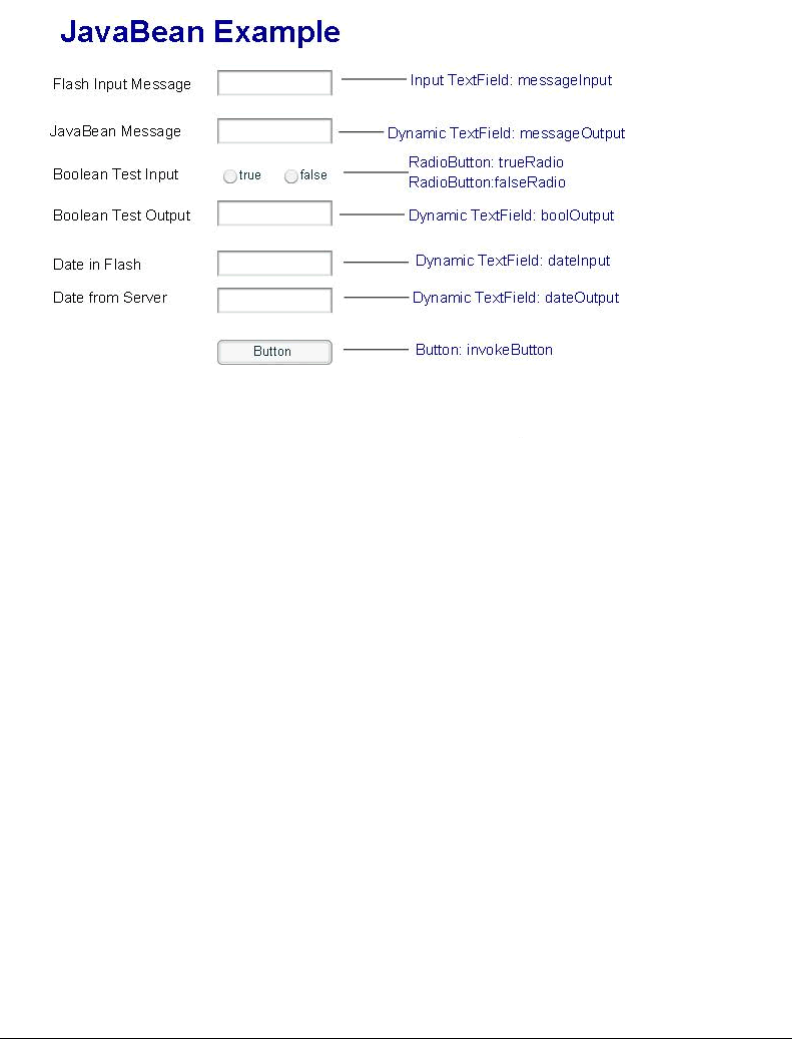User Guide
Table Of Contents
- Contents
- About Flash Remoting
- Getting Started
- Using Flash Remoting ActionScript
- Using the RemotingConnector component (Flash Professional only)
- Using Flash Remoting Data in ActionScript
- About Flash Remoting and data types
- Understanding Action Message Format
- Converting from ActionScript to application server data types
- Converting from application server data types to ActionScript
- ColdFusion to ActionScript data conversion issues
- About working with objects
- About working with RecordSet objects
- About working with XML
- The NetConnection Debugger
- Using Flash Remoting with ColdFusion MX
- Using Flash Remoting for Java
- About Flash Remoting for Java
- Calling Java classes or JavaBeans from ActionScript
- Calling Enterprise JavaBeans (EJBs) from Flash
- Calling servlets and JSPs from Flash
- Calling JMX MBeans from Flash (JRun only)
- Calling server-side ActionScript from Flash (JRun only)
- Handling function results in ActionScript
- Using Flash Remoting with JRun security
- Passing XML objects between Flash and Java
- Viewing Flash Remoting log entries
- Using Flash Remoting for Microsoft .NET
- Flash Remoting for Microsoft .NET
- Calling ASP.NET pages from Flash
- Making an ASP.NET page available to Flash Remoting
- Getting a reference to an ASPX-based service in ActionScript
- Invoking ASPX pages in ActionScript
- Using the Flash Remoting custom server control in ASPX pages
- Using the Flash Remoting namespace in code-behind files
- Using ASP.NET state management with Flash Remoting
- Using ASP.NET exception handling
- Using ADO.NET objects with Flash Remoting
- Displaying a RecordSet object in Flash with ActionScript
- Calling web services from Flash
- Calling ASP.NET assemblies from Flash
- Viewing Flash Remoting log entries
- Using NetServices and Connection Classes
- Index

Calling Java classes or JavaBeans from ActionScript 125
Looking at the user interface for the JavaBean
The following figure shows the user interface of the example Flash application with callouts that
indicate the field types and variable names referenced in the ActionScript code.
Looking at the ActionScript code that calls the JavaBean
The following code shows the ActionScript of the example Flash application, with comments
in bold:
import mx.remoting.*;
import mx.services.Log;
import mx.rpc.*;
import mx.controls.*;
class init_Categories extends mx.screens.Form
{
function init_Categories()
{
super();
mx.remoting.debug.NetDebug.initialize(); // initialize the debugger
//establish the gateway and obtain a reference to the JavaBean
flashtestService = new Service("http://localhost:[port number]/
flashservices/gateway", new Log("CategoriesLog", Log.DEBUG),
"flashgateway.samples.FlashJavaBean", null);
addEventListener( "reveal", onReveal );
}
function onReveal()
{
flashDate = new Date();
This Flash application invokes several ‘getter’ and ‘setter’ methods on a JavaBean in the remote
server. The bean is statefil to this client, as indicated by the counter. This is designed to be
identical to the useBean functionality of JSP.










